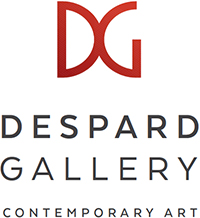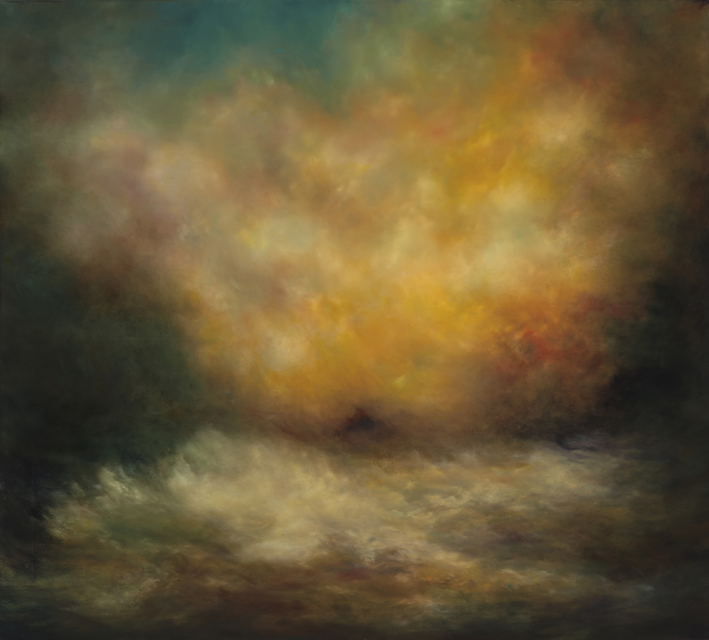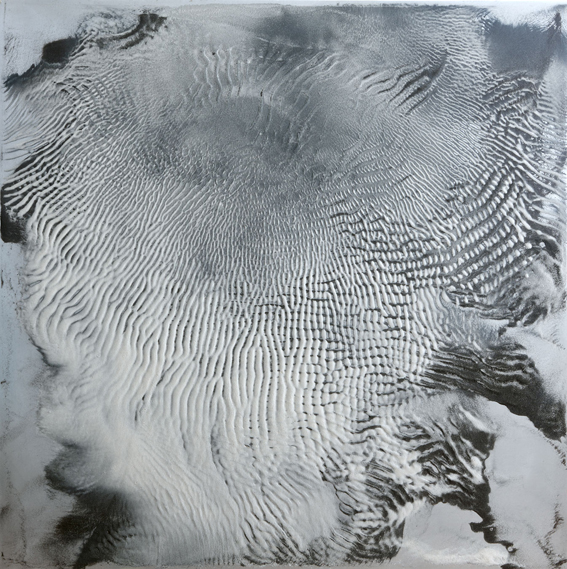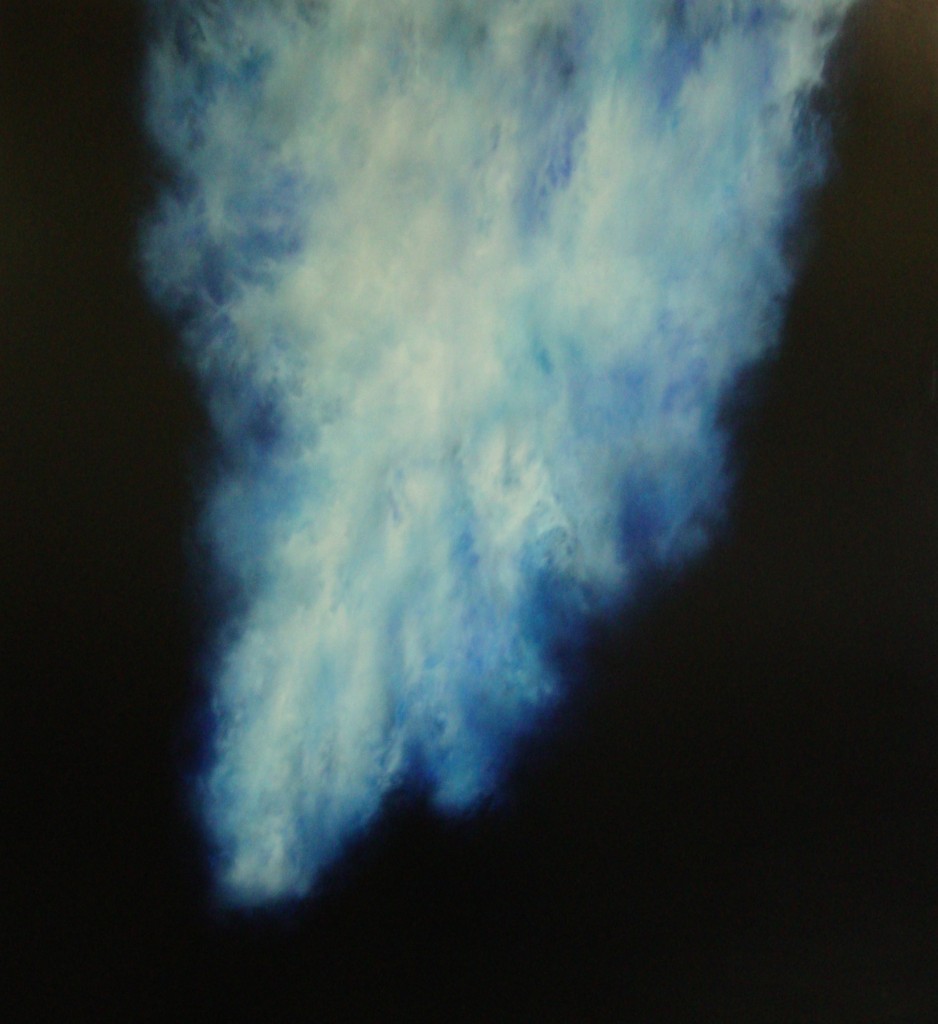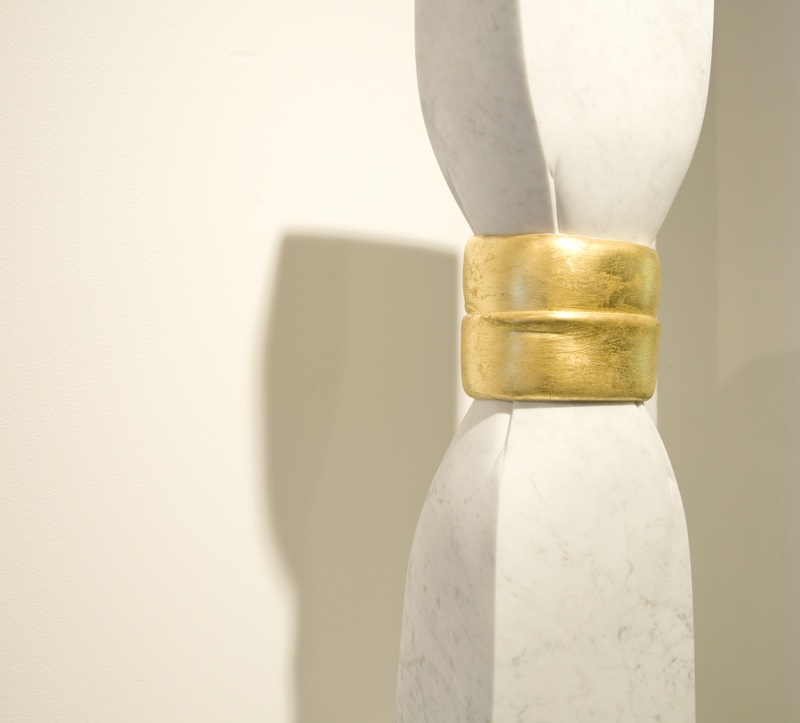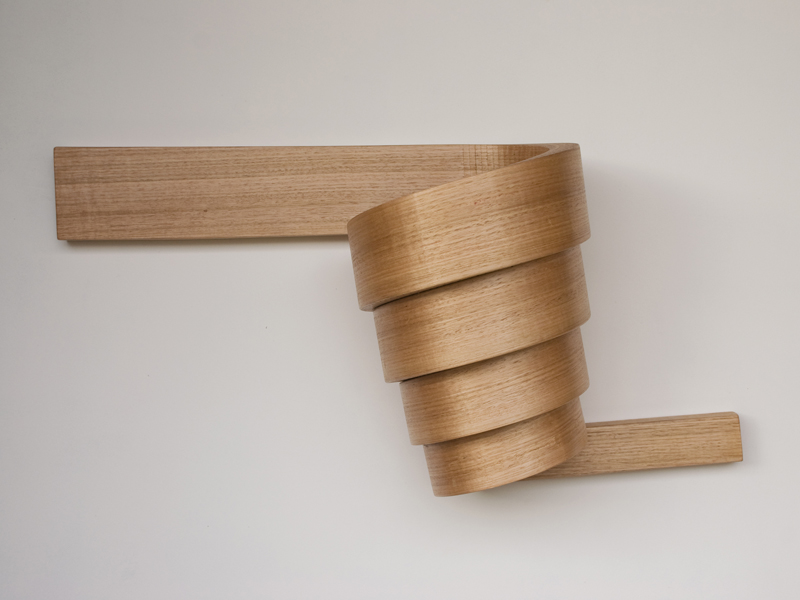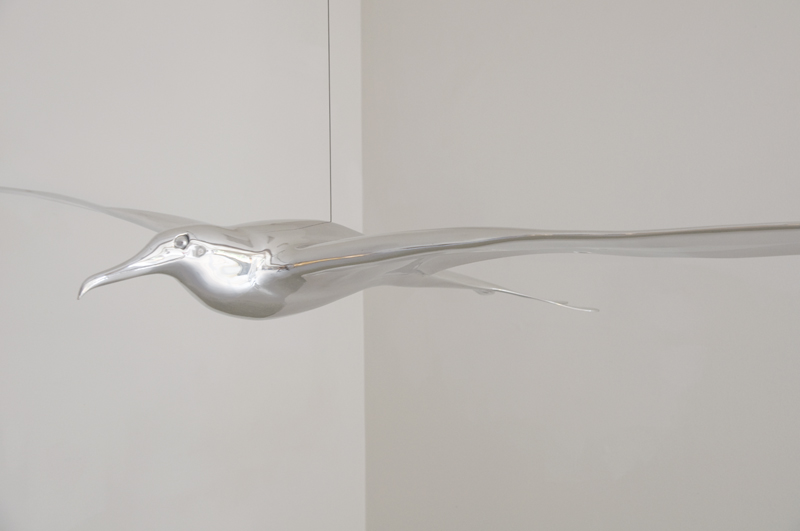











CATHERINE WOO
Catherine Woo’s works provide a visual exploration of the inter-relationship between humans, their bodies and the natural environment. Her delicate, abstract forms, rendered in intensely detailed surfaces, draw forth various analogies between the body and the environment. Catherine describes the works as landscapes, but by infusing aspects of the body within them, an ambiguity arises that blurs the traditional notion that the landscape is outside of the body.
By using a range of unconventional materials, Catherine creates works that are both macro and micro-interpretations of natural phenomena. Elements such as iron, silica, calcium carbonate, mica and black sand are combined to evoke flesh; rivers; plant forms; arteries; cloud patterns. These views could be aerial views of earth, imprints left in sediments at the bottom of a lake or microscopic snapshots from within the body. In conflating the regions of the body and the environment, new possibilities are explored where the self is inextricable from the environment that contains it.
In 2010, Woo was included in an exhibition at the Samstag Museum in Adelaide titled Abstract Nature. In 2008, Woo was awarded a $20,000 New Work grant by the Australia Council Visual Art Board and was included in the Biennial of Australian Art in Adelaide. She has completed major commissions for corporations including Visy Corp Australia, the Chinese World Trade Centre, Beijing, Shangri-la Hotel, Beijing; Four Seasons, Hong Kong; and the Ritz Calton Hotel, Shanghai, as well as being represented in private and public collections in Australia, Britain and Asia.
ANDREW MCILROY
My elemental paintings
are evocative intimate visions, embedded with individual experiences. Painted in strong saturated tones, they portray expressive seascapes with tumultuous, unpredictable seas and stormy skies and often include images we may all recall of diving or tumbling into too-deep, dark waters.If they went only this far, they could be viewed as outward looking, non-sensual depictions of nature. However, there is something deeper going on. From their composition and palette, the paintings capture my mood and are imbued with a strong sense of emotion, illuminating the ever-present forces of nature.
In the isolation of my studio I immerse myself in imagined landscapes. These elicitations have their basis in reality, referencing plein air studies, but are more produced from a memory. They remain deeply sensual works and at times heightened with imagery of disturbing experiences – capturing the fear and awe that one experiences when confronted in nature by both the things we can see and the things we cannot.
My paintings are deeply personal; posing a metaphor for the fears and anxieties that gripped me as a child. I know I am not alone in these life experiences so I hope to emotionally engage, confront and connect with the viewer using such familiar symbolic images and shared experiences in the tradition of the Romantic painters of the past.
DALE RICHARDS
Dale Richards was offered his first solo show, when he was sixteen years old, in Devonport’s The Little Gallery owned by Jean Thomas who supported a number of emerging artists from the NW Coast area.
Dale won the Owen Tooth Memorial residency and travel grant to France in 1974.The exposure to French culture and art was a huge inspirational lift to the young painter with great European artists work being easily accessible. After returning to Sydney and doing odd jobs, but always painting, Dale moved to Berlin in 1982 spending almost a year there, had a solo show at a renowned commercial experimental art space – Gallery Dia. Travelled through Europe for a while eventually returning to Sydney after a stint in New York and held a solo show at the Rex Irwin Gallery, Sydney. Dale shared studio space with numerous artists including Gary Shead who regards Dale as a very good painter. Despard Gallery first exhibited his paintings in 1993; the exhibition was titled ‘The incoming Tide’.Since returning to Tasmania twenty years ago, Dale has lived and painted in the Opossum Bay and South Arm area, about 40 minutes out of Hobart, overlooking the Derwent.
Dale has always been a figurative artist, his characters are occasionally melancholic, but always compelling. I recall overhearing two visiting physiologists discussing Dale’s work in the gallery, “There’s a case study in this bloke.”
PETER HJORT
Peter Hjort is a Swede turned Australian. When the family moved to Tasmania in 1979 Peter re-educated himself to attain an Assoc Dip in Fine Art (Sculpture), from TCAE in Launceston in 1982. He has now been in consistent arts practice for over 32 years, built up a considerable body of work and exhibited throughout the world. His reputation as a 3D and studio and public artist is well established, underscored by his inclusion in both the inaugural ‘Who’s Who in Tasmania’, also ‘Who’s Who in Australia’. In addition, he is a winner of the Tasmanian Art Award for Sculpture four times since its inception in 2002.
Over the years he has exhibited consistently interstate and in Tasmania and was a finalist in this year’s inaugural $10,000 ‘Artentwine’ acquisitive Award. Hjort works with many public and private business to develop conceptual designs in single or multi media.
His large public sculptures can be seen around Tasmania, in Launceston, Hobart Devonport and Bridport.
MIKE SINGE
Born in Perth Western Australia, Mike Singe received a Bachelor of Fine Art from Curtin University in 1990 and established a prominent profile within the Perth art community before moving to Tasmania in 2009. His work is represented in major institutions including the Art Gallery of Western Australia, Murdoch University, Curtin University and the Kerry Stokes Collection. Singe has also been the recipient of multiple development grants through ArtsWA.
In 2009 he was awarded an Australian Postgraduate Award to undertake his Master of Fine Arts at the Tasmanian School of Art. The focus of this research, completed in 2011, into the shifting human behaviour and cultural systems in response to the climate change debate continues to inform his practice. In his predominately sculptural practice Singe utilises readily available utilitarian products as the primary material for his intricate constructions. Each product is specifically selected for its conceptual links to the subject of the sculpture, rather than its apparent ease of manipulation. This approach results in some inventive and unique works.
TONY BARRON
WEATHER is the driving force for many wild species. Without it, stagnation would have seen many disappear throughout the evolution process, the strongest survive and flourish. They instil wonderment in us, we revere their freedom. Their pure form has developed from –“form follows function” and their form is perfect for their survival.
To an extent, our species insulates us from the natural world around us, we build shelter from basic requirements to elaborate palaces, we have developed technologies for buildings and even cities that can completely control and insulate us from any contact with weather, and we defer from natural selection.
Even with our most sophisticated technologies, weather can interrupt or even halt our intentions to march forward, and after the storm, we eventually look around and see species have survived and flourished – without our gadgetry.
With substantial knowledge of two and three dimensional design and construction processes gained over many years in diverse industries such as, Construction, Automotive, Shipbuilding and Mining, Sculpture works have been interwoven with these, were high technical skills have been captured to produce quality unique works of art.
